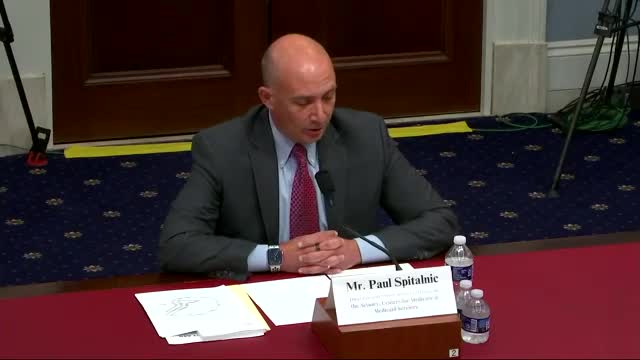Medicare and Social Security face looming financial crises
June 14, 2024 | Budget: House Committee, Standing Committees - House & Senate, Congressional Hearings Compilation

This article was created by AI summarizing key points discussed. AI makes mistakes, so for full details and context, please refer to the video of the full meeting. Please report any errors so we can fix them. Report an error »

In a recent government meeting, officials discussed the critical findings from the 2024 Medicare Trustees report, highlighting significant financial challenges facing the Medicare program. The report revealed that Medicare expenditures surpassed $1 trillion for the first time, reaching approximately $1.037 trillion in 2023, while total income was slightly lower at $1.025 trillion. This financial strain is compounded by a decrease in assets held in special issue U.S. Treasury securities, which fell by $12.4 billion to $396.7 billion.
The Medicare program operates through two distinct trust funds: the Hospital Insurance Trust Fund (HI) and the Supplementary Medical Insurance Trust Fund (SMI). The HI Trust Fund, which supports inpatient hospital services, is projected to be depleted by 2036, with revenues expected to cover only 89% of expenditures at that time. In contrast, the SMI Trust Fund, which includes Medicare Parts B and D, is designed to maintain an actuarial balance through annual adjustments to premiums and government contributions.
The meeting also addressed the implications of rising Medicare costs on federal budgets. The SMI program's costs are anticipated to grow faster than average income, leading to increased demands on federal resources. Government contributions to the SMI program are projected to rise from 16.9% of federal income tax receipts in 2023 to over 30% in approximately 40 years.
Additionally, the discussion touched on the Social Security Trust Funds, emphasizing their separate financial structure and the importance of maintaining adequate reserves. The Old-Age and Survivors Insurance (OASI) Trust Fund is expected to deplete its reserves by November 2033, with only 79% of scheduled benefits payable at that time. This projection has improved slightly due to better-than-expected economic growth in 2023.
Officials underscored the urgency of legislative action to address these financial challenges, particularly as demographic shifts and economic factors continue to impact the sustainability of both Medicare and Social Security programs. The meeting concluded with a commitment to work collaboratively on potential reforms to ensure the long-term viability of these essential programs for seniors and disabled individuals.
The Medicare program operates through two distinct trust funds: the Hospital Insurance Trust Fund (HI) and the Supplementary Medical Insurance Trust Fund (SMI). The HI Trust Fund, which supports inpatient hospital services, is projected to be depleted by 2036, with revenues expected to cover only 89% of expenditures at that time. In contrast, the SMI Trust Fund, which includes Medicare Parts B and D, is designed to maintain an actuarial balance through annual adjustments to premiums and government contributions.
The meeting also addressed the implications of rising Medicare costs on federal budgets. The SMI program's costs are anticipated to grow faster than average income, leading to increased demands on federal resources. Government contributions to the SMI program are projected to rise from 16.9% of federal income tax receipts in 2023 to over 30% in approximately 40 years.
Additionally, the discussion touched on the Social Security Trust Funds, emphasizing their separate financial structure and the importance of maintaining adequate reserves. The Old-Age and Survivors Insurance (OASI) Trust Fund is expected to deplete its reserves by November 2033, with only 79% of scheduled benefits payable at that time. This projection has improved slightly due to better-than-expected economic growth in 2023.
Officials underscored the urgency of legislative action to address these financial challenges, particularly as demographic shifts and economic factors continue to impact the sustainability of both Medicare and Social Security programs. The meeting concluded with a commitment to work collaboratively on potential reforms to ensure the long-term viability of these essential programs for seniors and disabled individuals.
View full meeting
This article is based on a recent meeting—watch the full video and explore the complete transcript for deeper insights into the discussion.
View full meeting